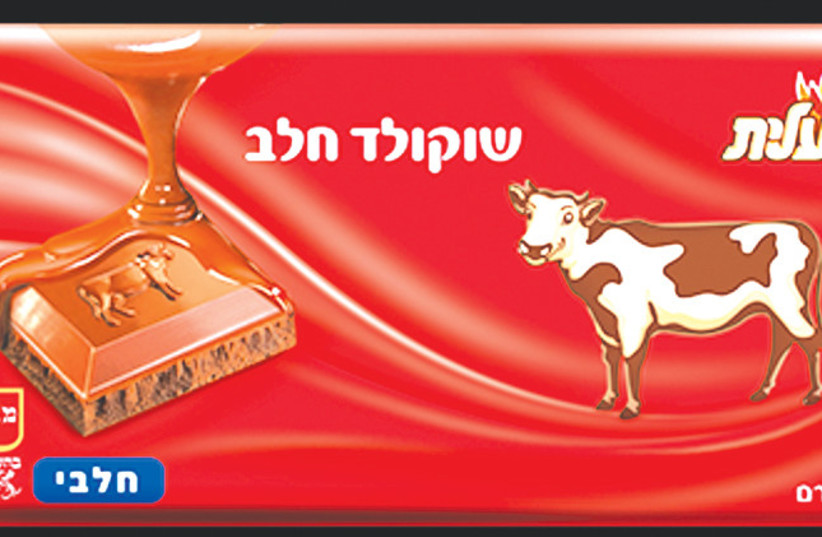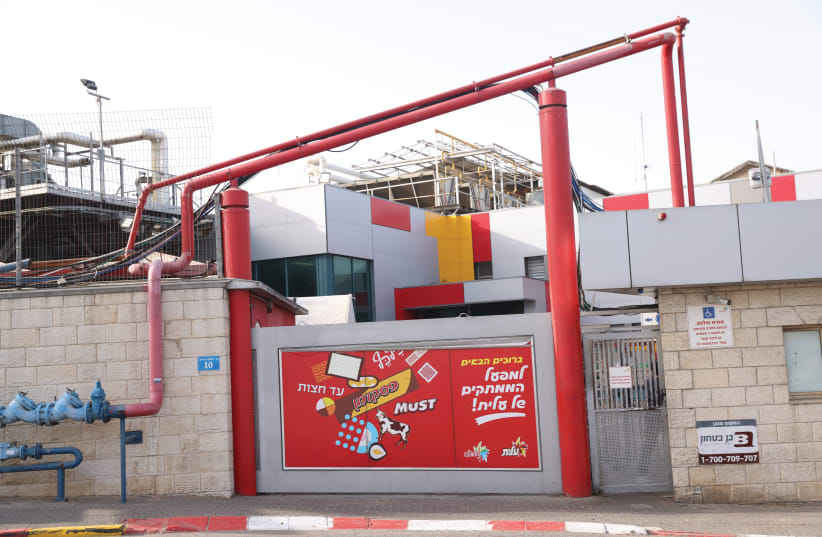In late April, food manufacturing giant Strauss Group issued a recall on a majority of its chocolate-based products following several reports of consumers contracting salmonella as a result of indulging in their favorite Strauss chocolate treats.
Shortly thereafter, an internal check of the company’s Elite chocolate factory production line uncovered multiple salmonella samples, which led to a total recall of Strauss chocolate bars, cereal bars, cakes and puddings from shelves throughout the country.
A subsequent investigation by the Health Ministry found the Elite site to be in violation of several health guidelines, including the presence of live pigeons (which are notorious for their lack of toilet training).
All of this culminated in the ministry suspending the factory’s manufacturing license for three months, which created an enormous vacuum on supermarket shelves where the red Cow (parah) Chocolate once resided. Milka, Tony’s Chocolonely and even Chocketta have claimed some of that empty space, while Strauss has silently dwindled away in the wings.
At the outset of Strauss’s Elite recall debacle, the initial suspicion from observers and experts alike was that the chocolate monolith would quickly make its way back to stores, quickly reclaiming its market share of nearly 70%. There was even suspicion that the company would find a way to shorten the duration of its factory’s suspension, though clearly that notion has abated.


A peek at Strauss’s stock market price history shows a distinct drop-off from around NIS 9,700 per share after the initial recall in late April, a fall from which the company has yet to recover. To date, even Strauss’s highest peak since the recall is 4.66% less than its prior standing.
Six months have passed since the ministry’s suspension, and Strauss’s Elite chocolate bars are hard to find in local supermarkets. What could the company be up to, and why does it seem that its stake in store stockrooms is still stunted?
What is Strauss planning?
The Jerusalem Post has learned that the formerly suspended factory returned to production two months ago, after having received approval from the ministry, and it is now working full-time to stock up on products.
The process of getting the factory back in working order took the company several weeks, as the company was cautious in ensuring that each section of the factory was fully operational, after having been out of commission for a quarter of a year.
Meanwhile, the company is working with several outsourced factories in Israel and abroad (which it has done since even before the recall). These outsourced factories are producing much of the products that make up Strauss’s currently meager chocolate presence in stores.
With these combined efforts, Strauss intends to amass enough product to launch a full-scale effort to make it back onto the nation’s candy shelves within the coming weeks. If Strauss were to pull the trigger on its prodigal son act too soon, it’s likely that the company would quickly fall short of demand.
Since Strauss has completed its careful factory reactivation and is now nearing a suitably sized backlog of stock, the next question is how the company will dress up its reemergence into the market for its consumers. After half a year practically absent from shelves, how can the red Cow Chocolate win back the hearts of shoppers?
Don’t call it a comeback, I’ve been here for years
The Elite brand has a lot of momentum that can help carry it back into Israeli pantries. While it will certainly need to compete for its place, that momentum will certainly aid its efforts. In fact, Elite’s staying power is so lasting that no competing brands have really managed to optimally capitalize on the void it left behind.
“I find it astonishing. Strauss was off the shelves, and the shelves were accumulating dust, and I was surprised that the vacuum basically maintained itself,” remarked Dr. Alexander Coman, from the Faculty of Management at Tel Aviv University. “There are so many players [in the chocolate space] you can find all over the world, and they were so scared of Strauss that they did not fill in the vacuum. I mean, they did it, but to a minimal extent.”
Part of that hesitation may stem from Strauss’s history of pushing out threatening competitors such as Nestlé and Cadbury.
“When they hoard your product, they do not have space available for competing products. So that’s how you elbow other products away from the store.”
Dr. Alexander Coman, Tel Aviv University Faculty of Management
“There was an attempt in the past, before this crisis, to bring in Cadbury, and Strauss basically devastated all the retailers who had Cadbury products. They were slaughtered by Strauss: they did not get discounts, they did not get products… they were really destroyed,” Coman recalled. “[Strauss is] incredibly powerful, and aggressive.”
When it comes to Strauss making its comeback move on stores, Coman suggested that the first order of business might be to give retailers an offer they can’t refuse.
“What I would expect them to do is to come up with many very attractive deals. The trick in such a situation is usually to come to offer the retailers deals on quantity, because that would force them to stock large quantities of your product and thus eliminate your competitors,” he said. “When they hoard your product, they do not have space available for competing products. So that’s how you elbow other products away from the store.”
From a marketing perspective, Coman is convinced that Elite’s brand awareness among consumers is such that it may not need to do much at all.
“People have so much confidence in Strauss that it will require very, very little effort,” he said. “I do not think that [Strauss] needs to do particularly much acrobatics, because the shelves are waiting for it eagerly.”
If six months off of shelves isn’t enough to kill the brand, it seems that competitors really fumbled the ball by not fully jumping on the enormous window they were presented with when Strauss was suspended.
“I do not understand the impotence of their competitors. They should all be ashamed of themselves for forfeiting this opportunity,” said Coman. “You would need something like Planet of the Apes for people to forget about Strauss and to consider other brands. I mean, you’d need centuries of disaster.”
THOUGH SHE hasn’t forgotten about Strauss’s chocolate, local teenage chocolate lover Orli has found a more than suitable replacement for her daily chocolate fix.
“I found these trying times to actually not be all that trying, since there was a ready supply of Milka chocolate, which I enjoy,” she said. “I have occasionally splurged on Kinder, although I find that the small serving sizes make it ultimately not worth it.”
For the most part, she explained, Milka has filled her personal void left by the red cow’s absence — though she’s always willing to move back to her past confection of fancy, should the proper numbers present themselves.
“Honestly, I think it would mostly depend on the price wars between the two. I would like to go for the cheaper chocolate,” she admitted.
That said, she still has her reservations about returning to Elite’s offering.
“When it comes to taste and texture, I’ve got to give it to Milka. They have a caramel chocolate option now, which I very much enjoy, and I find their regular milk chocolate flavor to be creamier than the Cow Chocolate, although admittedly, because of this, the Cow Chocolate makes for a more casual snack kind of energy,” she said.
When all is said and done, it’s all just chocolate; but as the saga potentially nears its close, it can surely serve as a cautionary tale to both individuals and companies alike.
The moral of the story? Even more so than the dangers of monopoly, or the importance of maintaining flexibility in the absence of the things we love, the key takeaway from all of this is simple: Don’t let birds crap in your food.

